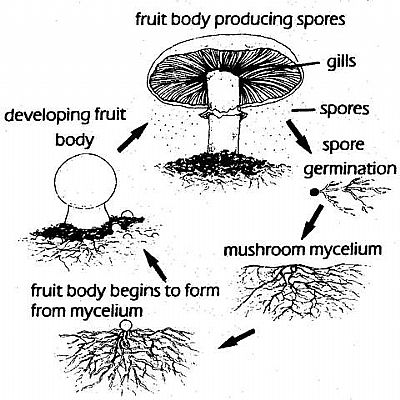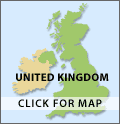MUSHROONS, FUNGUS & LICHEN
Helen Keating writing on the Woodland Trust website shocks us into this amazing subject : Fungi are a huge and fascinating kingdom with over 15,000 species in the UK. They live on land, in the water, in the air, and even in and on plants and animals. They vary widely in size and form, from the microscopically small to the largest organisms on Earth (at several square miles large).
We find mushrooms and other fungi all over the place. With such vast variety it is not surprising that we cannot identify them all, but the following may help.
"Picture Mushroom" as per the link below provides an online mushroom identification from photos.
An excelllent reference book is Mushrooms of Britain and Northern Europe by Josephine Bacon. There are clear references to which are edible and which are poisonous (although we reiterate check with an expert). See references at the end.
The key difference between fungi and lichen is that fungi are simple heterotrophic organisms while lichen is a composite symbiotic organism that forms from algae or cyanobacteria living among filaments of multiple fungi species. They are a lot more than simply mould and mystique. There is a lot more to each of these. If you want to learn more, have a look at the links below.
The more you look at mushrooms, the more amazing they appear. They are so much more than pretty forms found on a log or forest floor.
- Spore Dispersal by wind, water or animals and followed by a period of dormancy before germination
- They develop into thread-like structures called hyphae which become networks known as mycelium
- They mature into hyphal knots
- Eventually becoming fruiting bodies visible as mushrooms.
This is further described by Mycologist Paul Stamets of Host Defence - Mushrooms from which this diagram comes. See the link below.

This diagram comes from Host Defence - Mushrooms as link below.
You will often come across small nodules of mushrooms. It is evident from what you see above that these were simply the full mushrooms forming and will only be identifiable once further developed.
Of particular note is a book by Merlin Sheldrake entitled ENTANGLED LIFE. It shows how extraordinary they are. A quote from his website lures us closer.
When we think of fungi, we probably think of mushrooms. But mushrooms are only fruiting bodies, analogous to apples on a tree. Most fungi live out of sight, yet make up a massively diverse kingdom of organisms that support and sustain nearly all living systems. The more we learn about fungi, the less makes sense without them.
Sheldrake’s mind-bending journey into this hidden world ranges from yeast to psychedelics, to the fungi that sprawl for miles underground and are the largest organisms on the planet, to those that make all plant life possible, to those that infiltrate and manipulate insect bodies with devastating precision.
A mushroom is the fleshy, spore-bearing fruiting body of a fungus, typically produced above ground on soil or another food source. [Wiki]
If you thought that it was as simple as that, you are in for a shock. But when you are introduced to the world of mushrooms by Sheldrake you find even much more amazing aspects about them. How do mycellia explore and decide where to expland their labyrinths? Where to rise up as mushrooms to disperse their spores?
Something that becomes apparent when trying to identify all these as an amateur is that there can be variations in form and colour within species and this confuses the experts too.
Do not attempt to eat them without absolute assurance of accurate identifification. Many are posionous.
ATLAS SPORES : https://atlasspores.academy/educational-content/beginner-guides/mushroom-life-cycle-explained-from-spore-to-mushroom/
BACON, JOSEPHINE, Mushrooms of Britain and Northern Europe: John Beaufoy Publishing. 2012. ISBN 978-1-906780-60-9. An excellent identification reference.
BRITISH LICHEN SOCIETY : https://byjus.com/biology/difference-between-fungi-and-lichens/
BYJUS : This has a handy comparison table : https://byjus.com/biology/difference-between-fungi-and-lichens/
HOST DEFENCE MUSHROOMS : https://hostdefense.com/blogs/host-defense-blog/the-mushroom-lifecycle
MUSHROOM DIARY : A very good overview on mushroom identification : https://www.mushroomdiary.co.uk/mushroom-identification/
SHELDRAKE, MERLIN : Entangled Life. How Fungi Make Our Worlds, Change Our Minds, and Shape Our Futures. Vintage Publishing. 2020. ISBN 9781784708276. https://www.merlinsheldrake.com/entangled-life
VENDATU : https://www.vedantu.com/biology/difference-between-fungi-and-lichens
WILDFOOD UK : An excellent and comprehensive identification list : https://www.wildfooduk.com/mushroom-guide/
WIKIPEDIA : https://en.wikipedia.org/wiki/Mushroom
WOODLAND TRUST : https://www.woodlandtrust.org.uk/trees-woods-and-wildlife/fungi-and-lichens/
and https://www.woodlandtrust.org.uk/trees-woods-and-wildlife/fungi-and-lichens/ a good identity reference.

